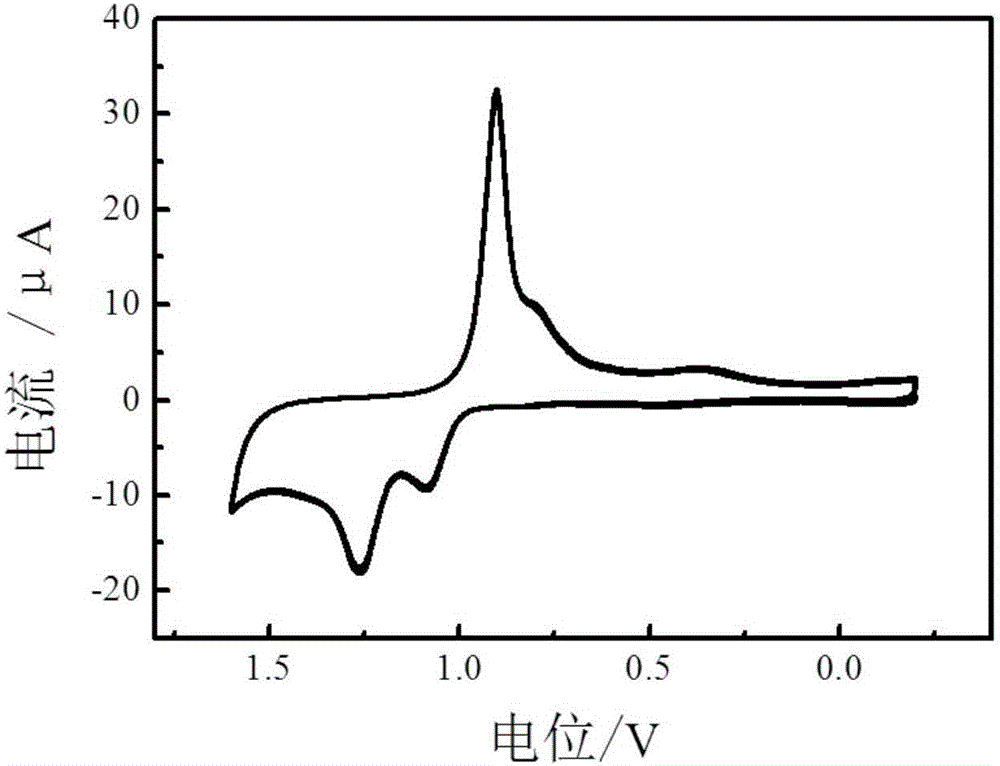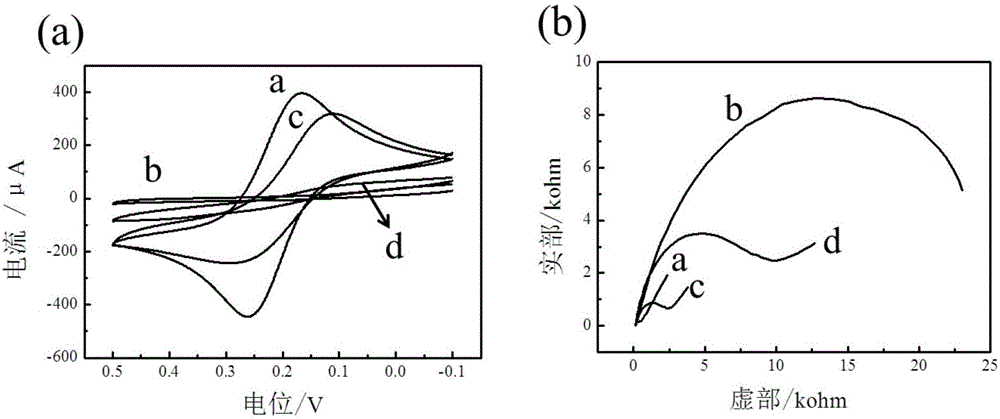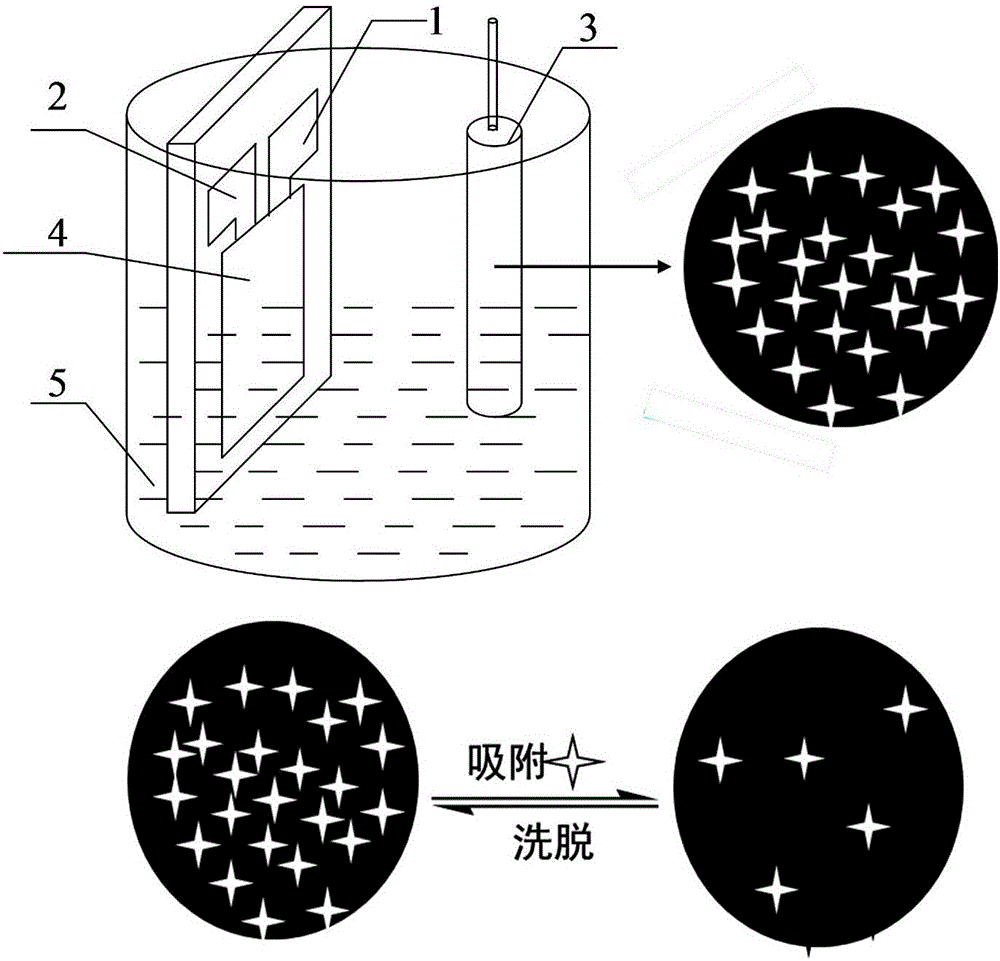Organic electrochemical transistor sensor based on molecularly imprinted membrane
A molecularly imprinted membrane and transistor technology, applied in the field of biochemical sensors, can solve problems such as limiting the application of organic electrochemical transistors, and achieve the effects of low detection limit, good selectivity and simple operation
- Summary
- Abstract
- Description
- Claims
- Application Information
AI Technical Summary
Problems solved by technology
Method used
Image
Examples
Embodiment 1
[0040] In this example, L-chromophore acid is used as a template molecule and o-phenylenediamine is used as a functional monomer to electropolymerize on the surface of a gold electrode to form a molecularly imprinted film, and the gold electrode modified with the L-chromophore acid molecularly imprinted film is used as The gate of the OECT sensor realizes the specific adsorption of L-tryptophan. The specific preparation method is as follows:
[0041] 1. Electrode pretreatment: Polish the gold electrode on the suede with 0.3 μm and 0.05 μm alumina powder in turn, then ultrasonically clean it with ultrapure water for 3 minutes; then soak the gold electrode in concentrated sulfuric acid (mass concentration: 98%) / hydrogen peroxide (mass concentration is 30%) (V / V=3:1) solution for 30min, after taking it out, then use ultrapure water to sonicate 3 times (1min / time), use N 2 blow dry. Finally, place the gold electrode in 0.5M H 2 SO 4 Activated in the solution, the potential win...
Embodiment 2
[0053] In this example, L-histidine is used as a template molecule and acrylamide is used as a functional monomer to electropolymerize on the surface of a gold electrode to form a molecularly imprinted membrane, and the gold electrode modified with the L-histidine molecularly imprinted membrane is used as an OECT sensor The gate realizes the specific adsorption of L-histidine. Its concrete preparation method is identical with embodiment 1, difference is:
[0054] In step 2, the polymerization solution contains L-histyl acid and acrylamide at concentrations of 20mM and 1M respectively, and contains initiator potassium persulfate (10mM), crosslinking agent N, N-dimethylene bisacrylamide (40mM) , the polymerization potential is -0.4~-1.4V, the polymerization rate is 20mV / s, and the number of polymerization circles is 20 circles. The eluent used in step 3 is 0.1M hydrochloric acid solution.
[0055] The current and impedance changes before and after polymerization, elution and a...
PUM
| Property | Measurement | Unit |
|---|---|---|
| thickness | aaaaa | aaaaa |
Abstract
Description
Claims
Application Information
 Login to View More
Login to View More - R&D
- Intellectual Property
- Life Sciences
- Materials
- Tech Scout
- Unparalleled Data Quality
- Higher Quality Content
- 60% Fewer Hallucinations
Browse by: Latest US Patents, China's latest patents, Technical Efficacy Thesaurus, Application Domain, Technology Topic, Popular Technical Reports.
© 2025 PatSnap. All rights reserved.Legal|Privacy policy|Modern Slavery Act Transparency Statement|Sitemap|About US| Contact US: help@patsnap.com



